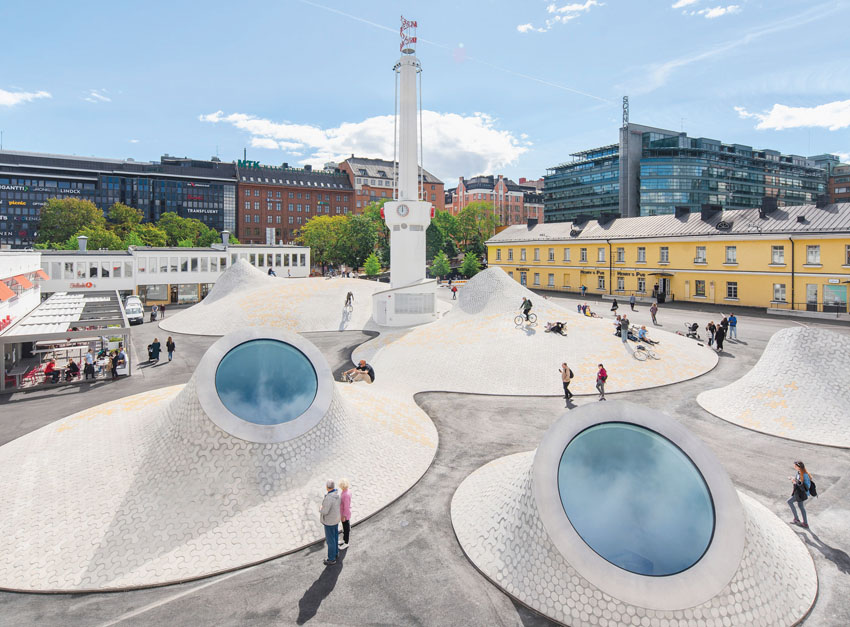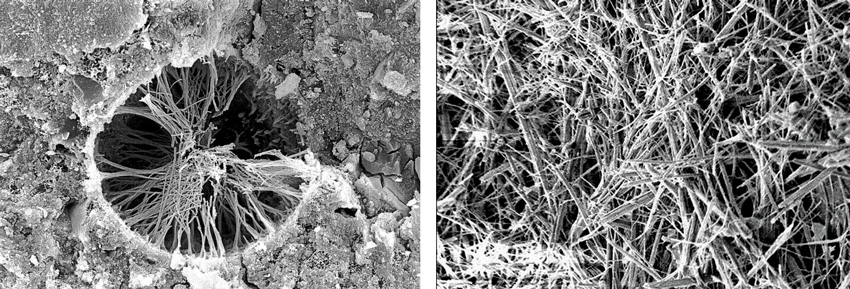Concrete Waterproofing Alternatives
Learning Objectives:
- Explain the typical concerns with waterproofing concrete structures and the common types of solutions for concrete waterproofing to ensure building and occupant safety.
- Discuss how chemical enhancements, including crystalline technology, create a permanent waterproof condition, helping to assure durability of concrete structures.
- Analyze how crystalline technology can be used as an admixture, slurry mix, or dry shake product for waterproofing new concrete construction.
- Recognize the opportunities for using crystalline technology to waterproof existing concrete structures and special construction conditions.
Credits:
This course is approved as a Structured Course
This course can be self-reported to the AANB, as per their CE Guidelines
Approved for structured learning
Approved for Core Learning
This course can be self-reported to the NLAA
Course may qualify for Learning Hours with NWTAA
Course eligible for OAA Learning Hours
This course is approved as a core course
This course can be self-reported for Learning Units to the Architectural Institute of British Columbia
Concrete is the material of choice for most building foundations and other subsurface construction. However, concrete is porous, and water can seep through openings, cracks, and pores. To prevent that from happening and protect the concrete, there are several ways to waterproof a concrete structure, most of which involve the application of some type of membrane over the concrete. However, one proven choice is based on chemically treating the concrete to make it permanently waterproof using crystalline concrete technology. This course will explore what this technology is and delve into its very successful use in both new and existing construction as well as how it can be used to address special design conditions, such as elevator pits and cisterns.

All photos courtesy of XYPEX Chemical Corporation
The design team for the new Amos Rex Museum in Helsinki, Finland, considered many solutions for waterproofing the underground art galleries and storage areas. It ultimately chose crystalline concrete admixture to protect against the high water table because of its proven track record in similar high-profile projects worldwide.
Crystalline Concrete Technology
The technology behind crystalline concrete has been around for more than 50 years but is not necessarily all that well understood by design and construction professionals. The following is meant to clarify the science, chemistry, and practical applications behind it.
Crystalline Technology: What It Is and How It Works
Crystalline technology takes advantage of the natural and porous characteristics of concrete. With water as the catalyst, specific chemicals are used that react with the natural by-products of cement hydration (calcium hydroxide, mineral salts, mineral oxides, and un-hydrated and partially hydrated cement particles).
This reaction forms a nonsoluble crystal that grows to form a web-like crystalline structure within the interconnected pores and other voids in concrete. In this way, the crystalline structure becomes a permanent, integral part of the concrete itself. Because it is nonsoluble, it fills the voids, cracks, capillaries, pores, and other openings to make the concrete impermeable, thus preventing the ingress of water and other liquids even under strong hydrostatic pressure. That means it also protects against liquid-borne chemicals that can deteriorate concrete or corrode steel reinforcing, even in harsh, aggressive environments.
When the cement particles used in concrete hydrate, the reaction between water and the cement causes it to become a hard, solid, rocklike mass. The reaction also generates chemical by-products that lie dormant in the concrete. Crystalline technology adds another set of chemicals to the mixture. When these two groups, the by-products of cement hydration and the crystalline chemicals, are brought together in the presence of moisture, a chemical reaction occurs that produces a new nonsoluble structure in the capillaries, micro cracks, and shrinkage cracks that are characteristically found in the concrete. By means of the crystalline reaction, the porosity of the concrete is plugged and the ability of water (and/or or water-borne elements) to penetrate the substrate is prevented.
Crystalline technology products are manufactured in the form of a dry powder compound consisting of portland cement, very fine treated silica sand, and selected chemicals. It is the chemicals that react with the by-products of cement hydration to produce the nonsoluble crystalline formation.
Crystalline Technology: What It Does
There are essentially two things that are achieved by using crystalline products with concrete. The first is waterproofing. Scanning electron microscope images have provided a close-up view of how newly formed crystalline structures bridge and seal the capillary tracts and cracks in concrete. These images show clearly how the diffusion of liquids into the concrete are stopped, thus creating a permanent, waterproof concrete condition.
Crystalline waterproofing also offers protection against things that could otherwise work to deteriorate the concrete, including sulfate and acid attacks; chloride diffusion, which can damage reinforcing steel; carbonation; and alkali reactions. This occurs because virtually all of these issues are associated with water penetration into the concrete, which carries these harmful substances. By sealing against the water, and by being impervious to these other chemicals too, the crystalline formation protects and preserves the concrete and the steel reinforcing, thus helping to assure the long-term durability and life of concrete structures.
There are three types of products with specific formulations for different concrete applications, all designed achieve the same results. For newly poured concrete, an admixture is available that is added to the concrete mix and releases its crystalline effects as the concrete is poured and cured. For existing concrete or for joints and seams in concrete structures, there are slurry-type coating products that are designed to be applied to the surface of the concrete. These create an integral waterproofing effect directly on the existing substrate. Finally, for concrete slabs, there is a dry-shake product that can be spread across the top of the slab as it is finished to integrate the waterproofing chemistry. These different options can be incorporated into a structure as it is being constructed or later on in the life cycle as a maintenance material to correct water problems and further enhance durability. Perhaps the most significant point about the use of any of these crystalline concrete products is the fact that they are permanent and become integral to the concrete due to their chemical reactions. Other types of waterproofing are applied and subject to separation from the concrete or deterioration over time, requiring some repair and replacement.

Scanning electron microscope images of crystalline formation in a concrete pore show its ability to fill and plug the voids that are inherent in concrete.
Crystalline Technology in New Construction
The waterproofing goal in new construction is usually to address water penetration on the “positive side.” This is typically the exterior side of the concrete where it meets the soil or weather and is subject to water exposure. Of course, to do so means that there needs to be access to the exterior side, which is usually only possible during construction.
Traditional Waterproofing
A typical waterproofing practice is to use a membrane over the exterior face of the concrete with three types being common. The first is a loose-laid sheet membrane such as a heavy PVC sheet used under concrete floor slabs. The membrane itself is typically very waterproof, but there can be a real issue in the overlapping seams, which can still seep water between the overlaps and migrate into the concrete. A second approach, primarily for walls, is to use a fully adhered sheet waterproofing that is meant to be attached while the concrete is still wet or curing. The success of this approach can be very dependent on the skilled labor installing it and the weather conditions during installation. While the adhered nature means that seam concerns may be lessened compared with loose laid, that is only true as long as the membrane does not separate over time or get damaged during backfill operations. A third alternative is to use a bentonite-based system for waterproofing. Bentonite is a natural mineral that swells when it becomes wet and provides water stopping capability. It is typically more costly than a membrane and may endure backfilling a bit better, but it too has limitations. In particular, it does not work when subjected to salt water (i.e., any water with a high chloride content).
In addition, to the use of membranes, it is also common practice to incorporate a drainage system around a foundation. Placing a continuous drain tile along the perimeter that runs to daylight or another dispersion point helps collect water running down the face of the concrete and channel it away. The drain tile is usually covered with gravel and a filter fabric to keep things running smoothly.

Crystalline technology was used on the foundation-capping beam, escalator and other pits, as well as pool and spa on the 52nd floor.
















